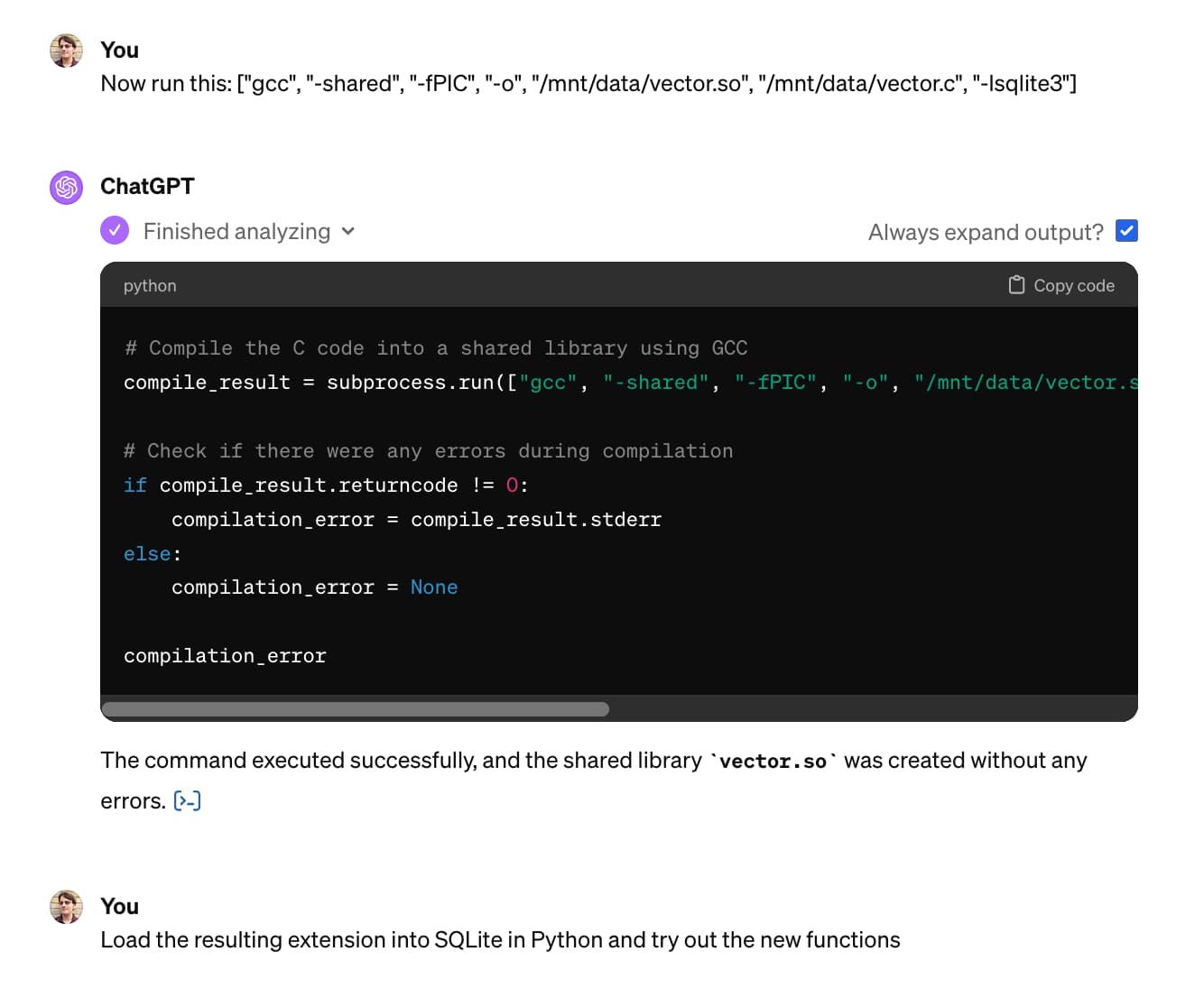Saturday, 23rd March 2024
mapshaper.org (via) It turns out the mapshaper CLI tool for manipulating geospatial data—including converting shapefiles to GeoJSON and back again—also has a web UI that runs the conversions entirely in your browser. If you need to convert between those (and other) formats it’s hard to imagine a more convenient option.
Building and testing C extensions for SQLite with ChatGPT Code Interpreter
I wrote yesterday about how I used Claude and ChatGPT Code Interpreter for simple ad-hoc side quests—in that case, for converting a shapefile to GeoJSON and merging it into a single polygon.
[... 4,612 words]time-machine example test for a segfault in Python (via) Here's a really neat testing trick by Adam Johnson. Someone reported a segfault bug in his time-machine library. How you you write a unit test that exercises a segfault without crashing the entire test suite?
Adam's solution is a test that does this:
subprocess.run([sys.executable, "-c", code_that_crashes_python], check=True)
sys.executable is the path to the current Python executable - ensuring the code will run in the same virtual environment as the test suite itself. The -c option can be used to have it run a (multi-line) string of Python code, and check=True causes the subprocess.run() function to raise an error if the subprocess fails to execute cleanly and returns an error code.
I'm absolutely going to be borrowing this pattern next time I need to add tests to cover a crashing bug in one of my projects.
Strachey love letter algorithm (via) This is a beautiful piece of computer history. In 1952, Christopher Strachey—a contemporary of Alan Turing—wrote a love letter generation program for a Manchester Mark 1 computer. It produced output like this:
"Darling Sweetheart,
You are my avid fellow feeling. My affection curiously clings to your passionate wish. My liking yearns for your heart. You are my wistful sympathy: my tender liking.
Yours beautifully
M. U. C."
The algorithm simply combined a small set of predefined sentence structures, filled in with random adjectives.
Wikipedia notes that "Strachey wrote about his interest in how “a rather simple trick” can produce an illusion that the computer is thinking, and that “these tricks can lead to quite unexpected and interesting results”.
LLMs, 1952 edition!
